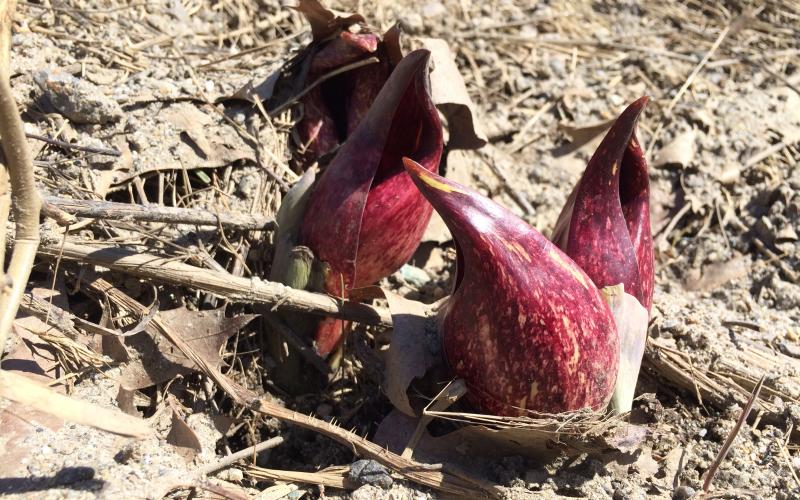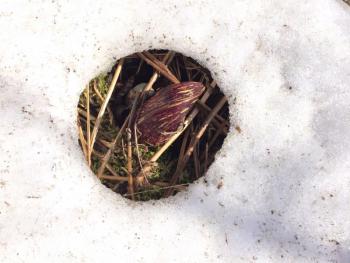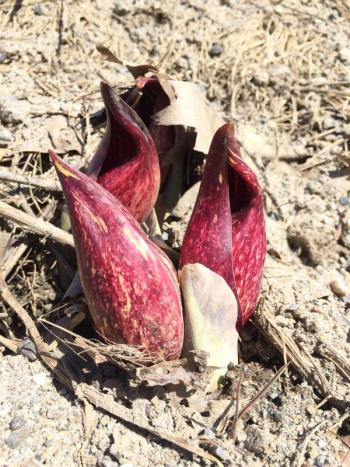It hasn’t been much of a spring so far. Freezing temperatures, flurries, and persistent piles of crud-covered snow are making April feel a lot like March, which felt a lot like February. It may not look like it, but the rites of spring are still on schedule, at least as far as Mother Nature is concerned. The evidence is out there. Flocks of robins have arrived in the Midcoast. Picking through the patches of matted grass between snow banks, the hardy little songbirds may seem a bit annoyed, but they’re here. Tiny stoneflies have emerged from woodland streams — where ever they can find a break in the ice — and have set out on their annual quest to procreate.
But the most cherished harbinger of spring in northern New England isn’t bugs or birds, it’s the beautiful vernal blooms of the skunk cabbage.
The stately spikes of the skunk cabbage plant have been making their appearance across the Midcoast despite the heavy blanket of snow that is stifling other wildflower species. Their tough, burgundy-brown flower spathe pushes persistently toward the heavens regardless of frozen ground or snow cover. And, if pure pushing power isn’t enough, the unique bloom is capable of melting its way to freedom.
Skunk cabbage is one of a handful of plant species capable of generating its own heat through cellular respiration, raising its internal temperatures to as much as 60 degrees F above the temperature of its surroundings. During springs like this one, where persistent snow still covers the muddy wetlands where skunk cabbage grows, the plant simply uses its thermogenic superpowers to melt its way through. In fact, a short walk through the swamps of the Midcoast will soon reveal neat little circles of earth scattered through the damp lowlands, each with a beautiful little skunk cabbage flower peeking out over the snow.
Of course, beautiful is a relative term. Skunk cabbage blossoms aren’t exactly what most people picture when they think of making a bouquet. They’re kind of weird, and pointy, and their mottled, purplish-red color is reminiscent of a raw sirloin tip that sat in the back of the refrigerator too long. But flashy colors and pretty petals are for bumble bees and butterflies, and it’s weeks too early for that crowd. Like a billboard targeting overnight truckers, the skunk cabbage flower promises meat, a marketing ploy that draws in preseason pollinators like flies to, well, to meat.
Flies love rotten meat. They love how it looks, how its smells, its warm stickiness... and skunk cabbage offers the whole package. As if looking like fetid tenderloin wasn’t enough, the plant further temps its potential pollinators with an odor that smells like the bottom of a butcher shop’s dumpster. Wafting through the wetlands during the lean weeks of early spring, the odor is the stuff of dreams for cold, hungry flies.
Outsmarted by a plant, the swindled insects often spend the entire night inside the maze-like spathe, fruitlessly searching, drunk on the smell of phantom meat. Hours later, guided out of the plant’s spiral blossom by the early morning light, the confused flies buzz off, coated in pollen, to the next skunk cabbage deception.
Yep. Spring is in the air.





























